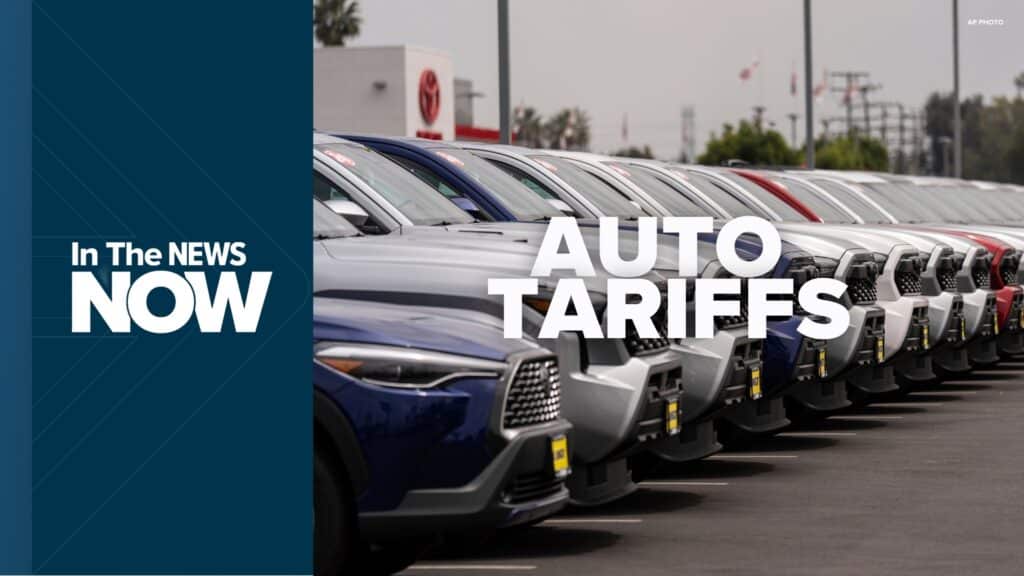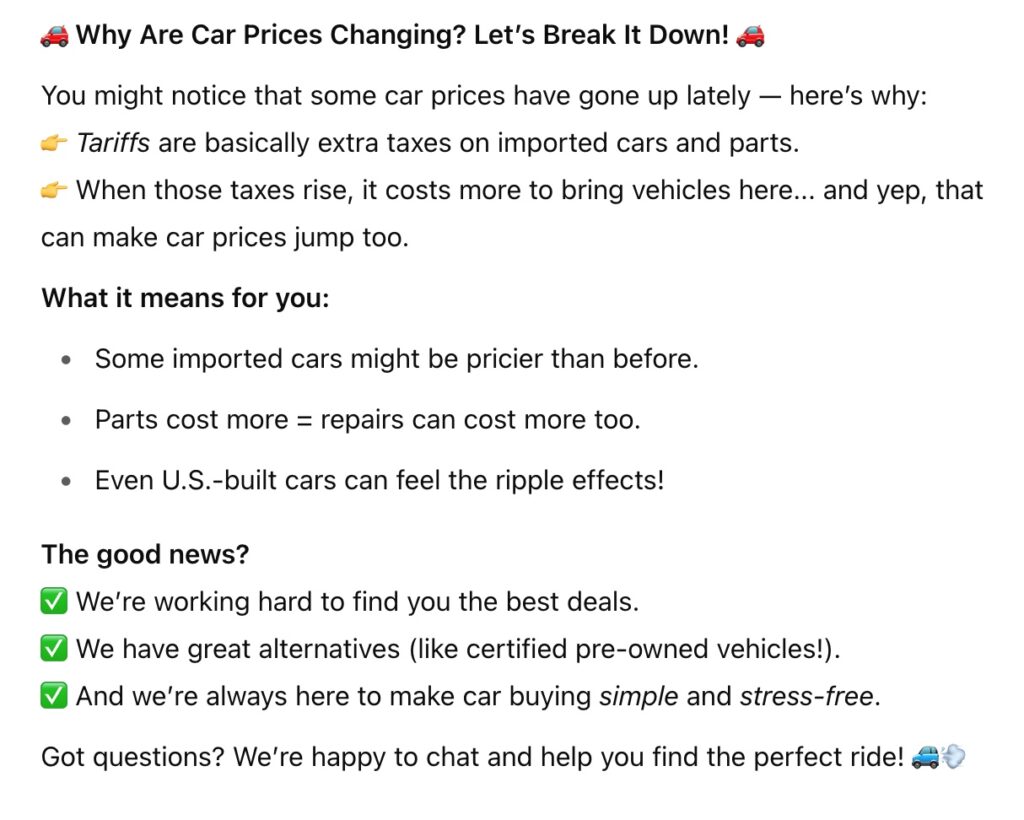 Tariffs — taxes imposed on imported goods — can have a profound impact on the automotive market. When tariffs rise, the costs of importing vehicles or automotive parts increase, often leading to higher prices for dealerships and, ultimately, consumers. Some car buyers have been trying to get ahead of the tariffs by buying a new vehicle now, but many people may not understand that even a domestic vehicle’s price will be impacted by tariffs. As a car dealer, explaining this complex economic reality to your customers in a clear, honest, and relatable way is crucial for maintaining trust and transparency.
Tariffs — taxes imposed on imported goods — can have a profound impact on the automotive market. When tariffs rise, the costs of importing vehicles or automotive parts increase, often leading to higher prices for dealerships and, ultimately, consumers. Some car buyers have been trying to get ahead of the tariffs by buying a new vehicle now, but many people may not understand that even a domestic vehicle’s price will be impacted by tariffs. As a car dealer, explaining this complex economic reality to your customers in a clear, honest, and relatable way is crucial for maintaining trust and transparency.
Here’s how you can do it:
Keep the Explanation Simple and Relatable
Most customers aren’t economists. Avoid jargon and frame tariffs in everyday terms. For example, you might say:
“Tariffs are like an extra tax added to cars and parts that come from other countries. When that tax goes up, it costs more to bring the vehicles here, and unfortunately, that can make prices rise for all of us.”
Simple analogies — like comparing it to paying extra for imported foods at a grocery store — can also help customers quickly grasp the idea.
Be Honest About the Impact
Customers appreciate honesty, especially when it involves their money. Explain how tariffs directly affect car prices, availability, and even the variety of models on the lot. For example:
Some vehicles could cost several thousand dollars more because of tariffs.
Some popular models might be harder to find.
Domestic brands might see smaller price increases, but could still be affected if they use imported parts.
By being upfront, you demonstrate integrity and foster trust, even when delivering tough news.
Show That You’re Advocating for the Customer
Make it clear that you, as a dealer, are doing everything possible to mitigate the impact. You can say:
“We’re working hard to find the best deals and pass along savings where we can. We’re also offering incentives and financing options to help offset these added costs.”
Framing yourself as an ally can turn a potential negative into an opportunity to strengthen customer loyalty.
Use Data and Examples Sparingly
Some customers appreciate facts. You don’t need to bombard them with numbers, but a quick reference to real impacts can support your explanation:
“Because of the 25% tariff on certain SUVs imported from Europe, prices have risen by around $3,000 on average.”
“Parts like tires and electronic components have become 10–20% more expensive, which also affects repair costs.”
Use relevant, updated examples and be ready to back up claims if a customer wants more detail.
Offer Alternatives
If tariffs have made certain models less affordable, point customers toward alternatives:
Highlight domestically produced models that haven’t been affected as much.
Recommend certified pre-owned vehicles that still meet their needs but come at a better price point.
Introduce service specials to offset maintenance costs associated with tariff-inflated parts prices.
Providing solutions helps keep the conversation positive.

Stay Informed and Train Your Team
Tariff policies can change frequently based on international relations, government decisions, and economic conditions. Make sure your sales staff stays updated and can confidently explain the basics to customers.
Regular internal briefings or quick FAQ sheets can keep your team ready to handle customer questions without confusion or misinformation.
Tariffs and their effects on car prices are complex, but your explanation doesn’t have to be. By keeping communication simple, honest, supportive, and solution-oriented, car dealers can help customers understand price changes without losing their trust. At the end of the day, it’s not just about selling cars — it’s about building lasting relationships grounded in transparency and care.


 CarChat24 Blog
CarChat24 Blog CarChat24 Blog
CarChat24 Blog